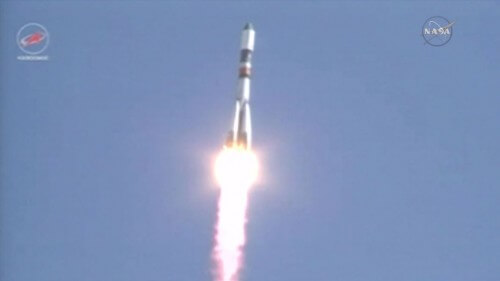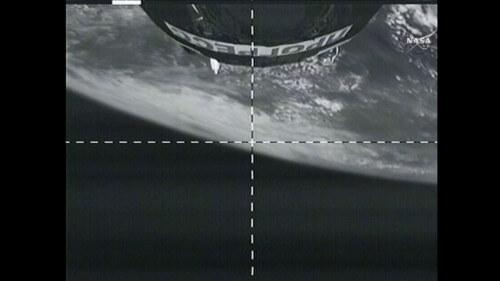After a malfunction that prevented the arrival of the Russian Progress 59 spacecraft about two months ago and the failure last week in the launch of SpaceX's private Dragon spacecraft, the Russian Progress 60 cargo spacecraft was successfully launched.

Update 5/7/15: The Russian supply spacecraft Progress 60 arrived safely at the International Space Station bringing with it equipment, experiments, oxygen, water and food for the astronauts on board.
Update 3 / 7 / 15
After a malfunction that prevented the arrival of the Russian Progress 59 spacecraft about two months ago and the failure last week in the launch of SpaceX's private Dragon spacecraft, the Russian cargo spacecraft Progress 60 was successfully launched. The launch took place at 07:55 Israel time this morning (July 3, 2015).
NASA reported Because at the time of launch, the space station itself passed at an altitude of 400 kilometers over northern Sudan, near its borders with Egypt and Libya.
Less than ten minutes after launch, the supply spacecraft reached the initial orbit and deployed the solar collectors and navigation antennas as planned. The spacecraft will make 34 orbits of the Earth until Sunday morning (10:13 Israel time).
As a reminder, to these two failures can also be added the explosion of the launch pad of the Orbital company's spacecraft last October - Orbital and SpaceX carry out the supply launches to the space station under a contract with NASA.
According to NASA officials, this series of failures of the supply spacecraft will not affect the astronauts on the International Space Station because they have supplies until at least October. If all goes as planned, they will have more breathing room.
According to advance information from the NASA website The spacecraft carries 880 kg of fuel, 48 kg of oxygen, 420 kg of water and 1,420 kg of food, spare parts, logistical items and equipment for experiments.
Russian cosmonauts Gandy Padlaka and Mikhail Kornienko and American astronaut Scott Kelly are currently staying at the station. Kronienko and Kelly took off to the station three months ago with the goal of staying there for a whole year, for the first time in the station's history. On the ground, the Russian Oleg Kononenko, the American Keel Lindgren and the Japanese Kimia Yui are waiting for the start. His trial is scheduled for July 22.
And if we mention Japan, in the middle of August the sixth Japanese cargo spacecraft of the HTV series will also be launched.
Meanwhile, NASA announced that the investigation will focus more on the direction of a software glitch that caused the explosion of the Falcon 9 launcher last week with the SpaceX Dragon supply spacecraft on it.
More of the topic in Hayadan:
- A SpaceX launcher carrying a supply spacecraft to the space station exploded in the air; NASA Administrator: We will assist in the investigation
- In space launches, failure is always an option


7 תגובות
Give my father an update on the progress, she said according to what I heard
It is possible to reach me on Facebook - Avi Blizovsky
or through the knowledge site's Facebook page
…..and one more thing, the possibility to edit the message, let's say within a period of 5 minutes from sending it.
Hello my father,
You work so hard to provide us with the articles and updates and sometimes it "falls" on two/years and other trifles from these sources who do not do your wonderful work any favors..
Shouldn't it be possible to make these comments to you privately? This is how you can fix the matter "away from the public eye",
And again, with great appreciation for the tremendous contribution to the "Science Path".
Robert Shouse
Robert Shouse
To my father
Two failures and not two failures...
The statistics of the failures are starting to raise fears about the loss of human life. It is interesting that NASA's decision to develop a new launcher based on the space shuttle engines that were developed 40 years ago, which until now seemed strange (probably pressure from interested senators...), is starting to show a correct decision in view of the fact that these engines have not failed even once.
To the fathers of the cosmonauts not the codomonauts